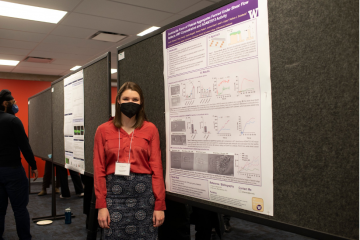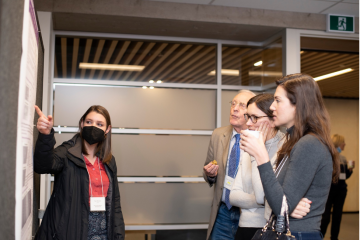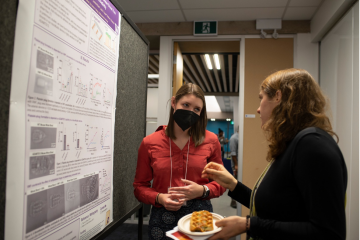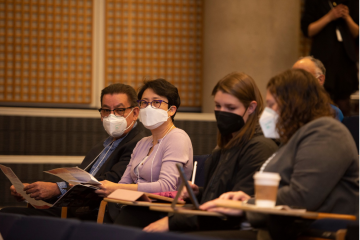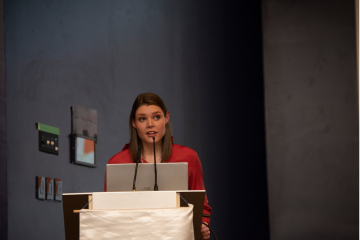Award Recipient: Ava Obenaus, 4th year PhD student, Mechanical Engineering, University of Washington
Supervisor: Prof. Nathan Sniadecki, University of Washington
Conference: Earl W. Davie Symposium on November 22, 2022
Location: Vancouver, BC
Poster Presentation Title:Contractile Force of Platelet Aggregates Formed Under Shear Flow Reflects VWF Concentration and ADAMTS13 Activity
I started my PhD at the University of Washington in Fall of 2019, which means most of my training has been during the pandemic. This was the first opportunity I have had to travel internationally and one of the only symposiums I have attended in person. Because of the pandemic, this was the first time I had seen some of my colleagues from Seattle in person in almost 3 years! Our labs are within a mile of each other and we meet on zoom bi-weekly, but we had to come all the way to Vancouver to see each other face-to-face. All of the talks were inspiring, but I especially enjoyed listening to one of my mentors, José López, as the Naiman-Vickars Professorship Speaker.
I was fortunate to present a poster describing our work on platelet biomechanics. My lab, led by Professor Nate Sniadecki, is interdisciplinary – our work spans engineering and biology. We have developed a polydimethylsiloxane (PDMS) microfluidic device that induces the adhesion and aggregation of platelets under shear in a manner analogous to the formation of platelet-rich thrombi in arterial flow. The device has force sensors embedded in the channel, which are comprised of a rigid block to create a high shear gradient and flexible post. As blood is perfused through the channel, a platelet aggregate encapsulates the post, which deflects as the platelet aggregate contracts. We can calculate the contractile force of the platelet-plug from the deflection of the post using Hooke’s Law. In preliminary studies, we have found that the formation of platelet-rich thrombi in our microfluidic device is highly sensitive to von Willebrand Factor (VWF) and ADAMTS13. These findings indicate that platelet forces may be a useful metric for assessing platelet function and monitoring thrombotic or bleeding risk. I enjoyed sharing our work with other trainees, faculty, and scientists. Everyone asked thoughtful questions, which sparked interesting discussions and future collaborations.
Caption for first 3 photos: Ava Obenaus presenting her poster at the Earl W. Davie Symposium entitled “Contractile Force of Platelet Aggregates Formed Under Shear Flow Reflects VWF Concentration and ADAMTS13 Activity”.
Caption for 4th photo: Ava Obenaus with collaborators Dr. José López, Dr. Junmei Chen, and Dr. Molly Mollica.
Caption for 5th photo: Ava Obenaus delivering her elevator poster pitch during the Earl W. Davie Symposium.
